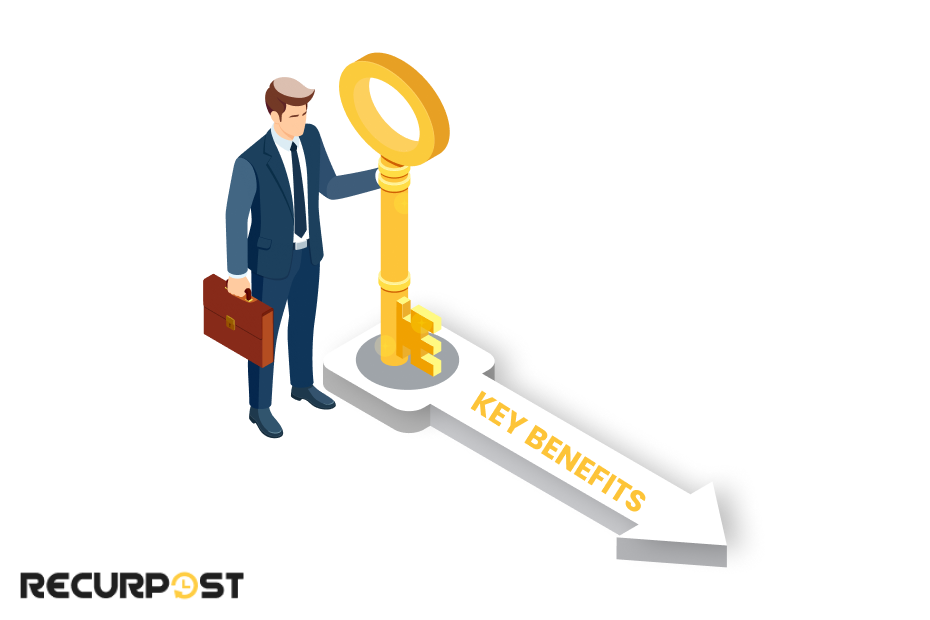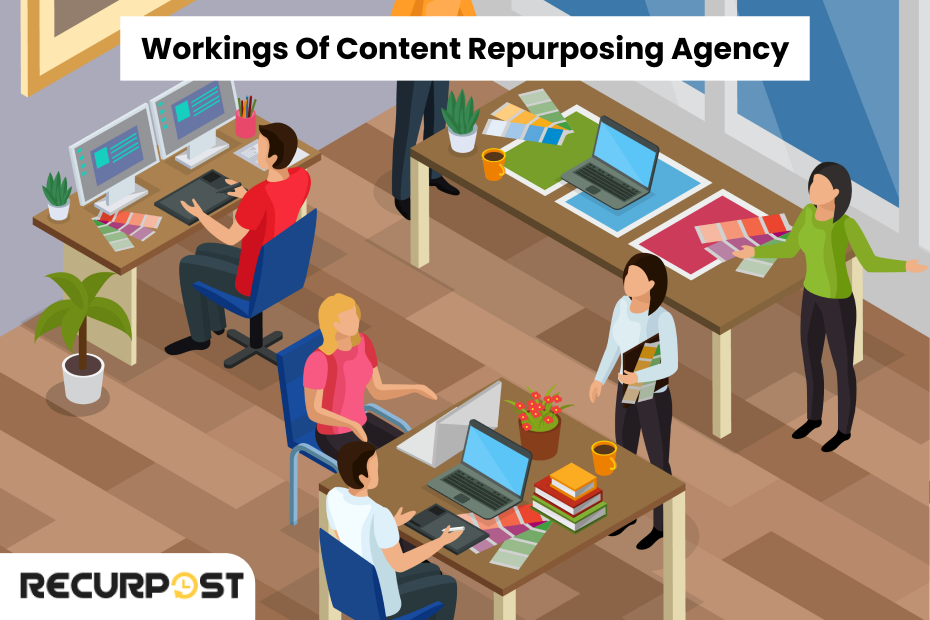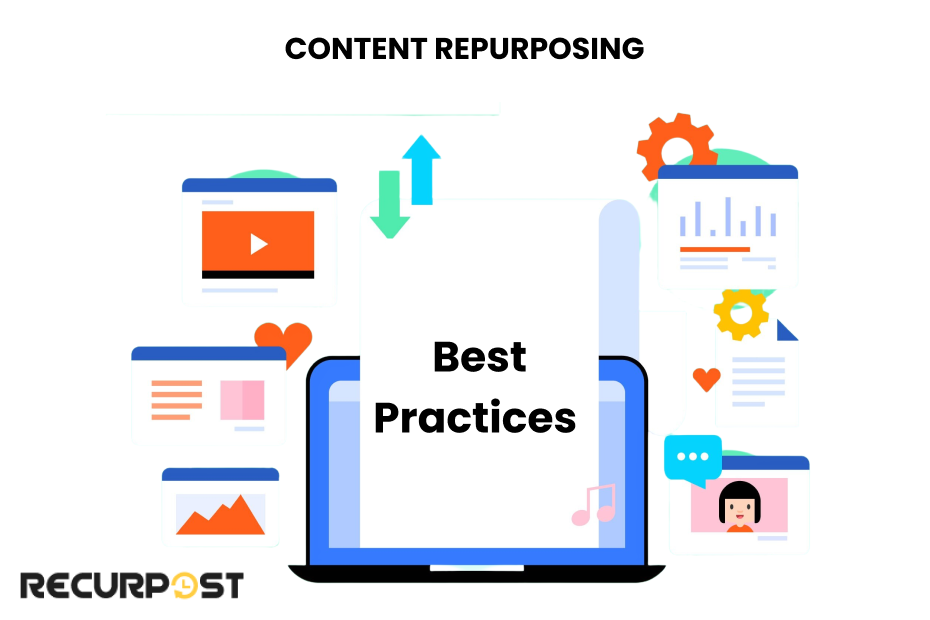Imagine your content is not able to serve its purpose to engage the audience, so what will be your action? Will you remove the existing content, or will you make a whole new one? Well, removing the content or making new content from scratch will be time-consuming, whereas 2025 content repurposing offers a streamlined, cost-effective alternative.
Rather, there is a simple but very effective answer to this question, and that is content repurposing, and the agency that provides such service is known as a content repurposing agency.
Creating new content is a long process, and it asks for lots of effort from the creators without guaranteeing its result. For this reason, many content creators nowadays rely on taking content pieces from older blogs, sites and reusing them for their purpose by making necessary modifications.
If you’re a social media agency aiming to expand reach, content repurposing becomes a valuable part of your overall strategy.
Content Repurposing
A survey revealed that 46% of marketers believe that repurposing content is more effective than creating new content. That’s why we focus on repurposing what you already have, whether it’s a podcast, book, course, or social media post. This way, you can do less while achieving more.
Content repurposing transforms an existing piece of content into different formats to maximize its value by distributing it to different social media platforms. This is essential for the content to remain relevant and attract value over time.
Before we move ahead, let us first know the basic difference between content creation and content repurposing.
Content Creation vs. Repurposing
Content creation is making fresh content like blogs, videos, infographics, or podcasts from scratch. It includes these steps:
1. Content production – Writing, designing, or producing the content based on your research and plan.
2. Topic ideation and keyword research – Choosing the right topic and finding keywords your audience is searching for.
3. Research and content planning – Collecting information on the topic and deciding what type of content (blog, video, etc.) fits best.
Content repurposing is taking existing content and giving it a new format or purpose. It includes these steps:
1. Identify valuable content – Find high-performing or evergreen content that can be used again.
2. Decide on new formats – Choose how to repurpose it, like turning a blog into a social media post, video, or infographic.
3. Adapt and optimize – Updating or reshaping the content to match the new format and audience needs, while keeping it fresh and engaging.
Now, let us know the purpose or the need for repurposing the existing content.
Purpose or The Need
- Repurposing of content is done to increase the longevity of the high-performing, long-form content to gain attention.
- To increase target audience engagement by transforming content into new formats. For example, blog posts can be turned into video content, podcasts, social media posts, or infographics.
Tip: Repurposing content is not recycling it, but transforming it.
Why Social Media Agencies Need Content Repurposing

In a content creation process, there are many, if not few, things big or small to be kept in mind to let the audience stop scrolling through their social feed. It is a social marketing strategy to publish content in a way that it receives the viewership of the target audience as well as new audiences.
Want to understand the full scope of social marketing services? Repurposing fits right in as a core element.
There are ample reasons for agencies in need of repurposing the content, but among all the few of them are:
1. Reach and Visibility
Social media channels prefer diverse content according to their algorithm and the current trend. Therefore, content repurposing service is essential to keep a check on this and make efforts to make it reach a wider audience segments.
For example, some people prefer reading blogs, some are more interested in watching social media videos, etc. By adapting to their interests, one can distribute content accordingly to increase visibility.
2. SEO Performance and Increase in Organic Traffic
Repurposing content helps to improve the website’s seo by creating multiple pieces of content targeting different keywords around the same topic. This strategy can lead to higher organic traffic and increased search rankings.
3. Efficient use of Time and Resources
Creating content from scratch is a time-consuming process. Repurposing existing content saves time and resources, allowing you to maintain a steady flow without needing to put all your efforts into constant content creation.
4. Consistent Brand Engagement
This helps to maintain a unified voice across multiple platforms of social media, which in turn leads to a stronger brand identity. Being consistent is crucial for building trust among your audiences. Variable formats can boost engagement and make your piece more shareable and accessible.
Tip- Repurposing bridges the gap between content volume and quality.
Key Benefits of Hiring a Content Repurposing Agency

90% of the total population in the United States uses social media. Isn’t that a crazy number? If the volume is this large, then your content should be such that it should engage this large volume. For this purpose, the content repurposing agency is in function. The benefits of hiring them are:
1. Expertise and Adaption
When you hire a content repurposing service, it gives you access to experienced content strategists and designers, by using the expertise of which the blog content, podcast, Instagram carousel posts, and more content can be prepared.
This will, in turn, lead to adaptation to new pieces of quality content like YouTube shorts or LinkedIn posts in a cost-effective way while maintaining brand identity.
This approach can even benefit those researching how to grow a social media marketing agency by streamlining content output early on.
2. Cost and Time Factor
Repurposing content through outsourcing helps social media agencies to save costs and time in a significant manner. This will lead to a systematic workflow management to create content rather than depending completely on in-house teams.
3. Content Handling
When a repurposing content agency is hired, it is easier to handle high-volume content demand across multiple channels in a more effective way. This handling of contents in various formats also works as a marketing strategy to make it evergreen content on all social posts.
For example, if you have podcast content, a podcast repurposing agency can quickly transform your episodes into video snippets, blog posts, and social media teasers—ensuring consistent, evergreen messaging across all your channels.
4. Performance and Analytics
Agencies provide detailed analytics of the performance of all the existing content and new content and suggest measures for continuous improvement. This makes the content creation process more simple and exciting, whether it is long-form content, video content, blog post, or many more.
Tip: Outsourcing allows agencies to focus on strategy rather than on production.
How a Content Repurposing Agency Works

Content repurposing is a strategic way to extend the life of content, maximize audience engagement, and optimize resources. Here are the steps of the workings of an agency:
1. Content Audit
The agency will analyze all the existing contents to identify pieces that can be repurposed. Content audit helps to identify which long-form pieces of content can be transformed into different formats to maintain their value and relevance.
2. Strategic Planning and Ideation
Performing all the content strategy processes needed to find which of the content formats are performing well and thereby ideating those content formats according to audience interests and preferences.
3. Creation and Adaptation
Transforming existing pieces of content into engaging formats like YouTube videos, case studies, infographics, or social media posts, adapting to audience’s behavior and preferences.
4. Platform Optimization and Distribution
Repurposing the content according to the specific requirements of various platforms ensures better engagement and visibility. For instance, turning a detailed blog post into an engaging video on YouTube, an infographic for Pinterest, or Instagram carousel posts can help you reach diverse audience segments.
For scheduling and distribution, utilize a tool like RecurPost, which offers bulk and custom scheduling of all the contents effectively. For those working on a structured social media plan, these steps align perfectly with long-term goals.
5. Performance Monitoring and Analysis
Monitoring the performance of your repurposed content is essential to understanding its impact and effectiveness. Use analytics tools to track metrics such as engagement, reach, and conversion rates.
This data will help you identify what works and what doesn’t, allowing you to adjust your strategies accordingly to optimize your content marketing efforts.
Tools for Effective Content Repurposing

The several tools required to create great content are at the top of the to-do list of any repurposing agency because they aid in making the work easy and effective.
Some tools that can be used are:
| Tool | Description | Feature | Pricing | Suitability |
| RecurPost | A content scheduling tool for multiple platforms. | Evergreen content repurposing, bulk scheduling. | Starts at $ 7/month. | Individuals, small business owners, agencies |
| Canva | A design and visual content creation tool with attractive designs. | Drag-and-drop editor, templates, Magic Write for captions, | Starts at $10/month | Marketers, content creators |
| Final Cut Pro X | Apple’s flagship video editing software for its speed and interface. | For one one-time purchase at $299.99 | For one-time purchase at $299.99 | Teams, marketing agencies |
| Google Analytics | Analytics and performance tracking tool by Google with top-notch accuracy | Monitors traffic and engagement metrics | Free. | Enterprise, small business. |
Best Practices for Content Repurposing

Making content go viral is the dream of every content creator and influencer. Repurposing is the process that helps transform dead content into the most viewed content. But to make this strategy work, there are certain best practices to be followed. These are:
1. Focus on Evergreen content
Choose the content that stays relevant over time. This can be done by refreshing outdated blog posts with a new structure and the way of presenting them. Add new case studies or examples to keep the content updated.
2. Transform Content Strategically
Choose formats that align with audience behavior or transform the existing formats of long-form blog posts into an infographic, short-form video clips, podcast, summary, and other formats that integrate with various other platforms.
3. Repurpose for Different Platforms
Every social platform has a unique content format algorithm and audience preference; repurposing content for different platforms increases reach and engagement. Adjust length, style, and format accordingly. For instance, transform a podcast episode into a long piece of content with additional information and insights.
This tactic is highly recommended whether you’re building your online visibility through a what is social media marketing agency strategy or running a full-scale agency marketing digital.
Points to Remember
- Select agencies familiar with social media trends and platform algorithms.
- Ensure they can manage repurposing contents in high volume.
- Repurposing helps in creating an effective content marketing strategy, which can boost your social presence.
- Partner with an agency that aligns with your strategic goals and budget.
- Choose the repurposing tool, which helps you schedule and manage the contents effectively.
Wrapping Up
Repurposing content is an essential strategy in modern digital marketing. By following this content strategy, you can reach new audiences and improve overall performance and visibility. This not only enhances the SEO of the content but its ability to maintain a consistent brand message across multiple platforms.
A content repurposing agency is just like any other firm or team of individuals that perform their work with full responsibility and determination.
Its role is to assist its users in transforming the old long-form content into modern short video clips, social posts, podcasts, or any other form.
Start repurposing your content today to unlock its full potential and maximize your marketing impact!
Frequently Asked Questions
1. What types of content can be repurposed?
Almost any type of content can be repurposed, including:
–Blog posts → Infographics, videos, or social media posts.
–Webinars and Podcasts → Short video clips, quotes, or blog summaries.
–Whitepapers and E-books → Series of blog posts or social media graphics.
–User-generated content → Testimonials, reviews, or social proof on social media.
2. How often should I repurpose content?
Repurpose content when it stays relevant and valuable, such as:
-Every 3-6 months for evergreen topics.
-When there are significant updates or industry changes.
-To align with seasonal trends or marketing campaigns.
3. How does repurposing content improve SEO?
Repurposing boosts SEO by:
-Increasing content visibility across different platforms.
-Targeting related keywords and reaching a wider audience.
-Generating more backlinks through varied content formats.
-Enhancing engagement signals like social shares and comments.
4. How do I repurpose user-generated content?
User-generated content (UGC) can be repurposed by:
-Turning customer reviews into social media graphics.
-Using testimonials on landing pages or in ads.
-Creating video testimonials or success stories.
-Featuring customer photos or videos in social media campaigns.
5. Does repurposing content make it less original?
No, repurposing doesn’t make content less original if done strategically:
-Adapt the content format (e.g., turning a blog into a video).
-Update and expand the content with new data or insights.
-Custom the message for different audiences or platforms.
6. How can I measure the success of my repurposed content?
Measure success by tracking:
-Engagement metrics: Likes, shares, and comments.
-Traffic and SEO impact: Using tools like Google Analytics.
-Lead generation and conversions: Email sign-ups, inquiries, or sales.
-Brand awareness: Mentions, reach, and follower growth.
7. Can we say that repurposed content is the new normal in the current content marketing scenario?
Yes, repurposed content is now a key strategy because:
-It maximizes content ROI by reaching wider audiences.
-Adapts to platform-specific trends (e.g., short videos on TikTok).
-Ensures consistent posting without overwhelming resources.
-Aligns with modern consumer behavior, where users prefer varied formats.

Shubham Agrawal is a passionate content writer, with over a year of experience in this field. He excels in creating content in informative and creative way that aligns with readers. He juggle with words to create an engaging content.
